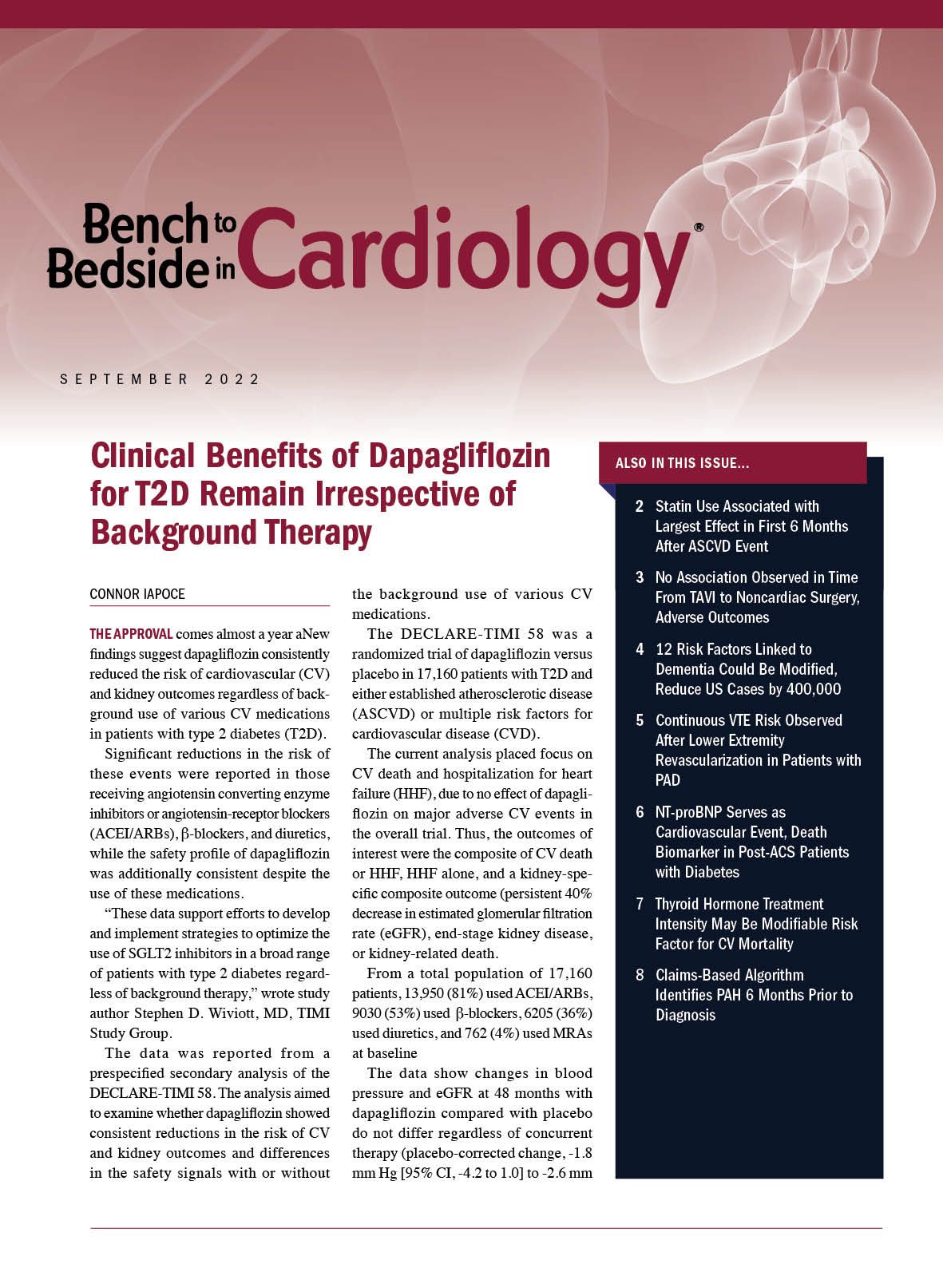Publication
Article
Bench to Bedside in Cardiology®
No Association Observed in Time From TAVI to Noncardiac Surgery, Adverse Outcomes
Author(s):
Timing, urgency, and risk category of surgery were not associated with increased risk of the primary end point.
Thomas Pilgrim, MD

A recent study reported that noncardiac surgery may be performed early after successful transcatheter aortic valve implantation (TAVI) in patients with aortic stenosis.
The data suggest that suboptimal device performance had an association with an increased risk of adverse outcomes after noncardiac surgery, but timing, urgency, and risk category of noncardiac surgery did not have an association with increased risk.
“Even noncardiac surgery within 30 days of TAVI was not associated with increased risk of 30-day adverse clinical events compared with noncardiac surgery at later periods after TAVI,” wrote study author Thomas Pilgrim, MD, MSc, Department of Cardiology, Inselspital, University of Bern.
There is a lack of available evidence on the safety of noncardiac surgery after TAVI and limited to small case series without guidance on the timing of noncardiac surgery after valve replacement or factors associated with procedural risk.
Data from the Bern TAVI registry was compiled and the study cohort was composed of patients undergoing noncardiac surgery after TAVI from January 2013 to July 2020. The baseline clinical data was updated to the time of noncardiac surgery using clinical follow-up data recorded in the registry. Additionally, the clinical urgency and risk category of noncardiac surgery were assessed among this population.
The primary outcomes measured in this study were a composite endpoint of all-cause death, stroke, myocardial infarction, and major or life-threatening bleeding at 30 days after noncardiac surgery. Investigators used multivariable Cox proportional hazards models to calculate hazard ratios (HRs), 95% confidence intervals (CI), and P values.
A total of 2238 patients had undergone TAVI between January 2013 and July 2020. From this total, 300 patients (mean age, 81.8 years; 144 [48.0%] women) underwent elective (n = 160) or urgent (n = 140) noncardiac surgery after TAVI and included in the analysis.
Data show 63 patients (21.0%) had noncardiac surgery within 30 days of TAVI, 75 patients (25.0%) between 31 days and 180 days of TAVI, and 69 patients (23.0%) between 181 days and 365 days of TAVI.
The patients were categorized into low-risk (n = 21 patients [7.0%]), intermediate-risk (n = 190 patients [63.3%]), and high-risk (n = 89 patients [29.7%]) surgery groups. The findings suggest composite endpoints occurred within 30 days of noncardiac surgery among 58 patients (Kaplan-Meier estimate, 19.7%; 95% CI, 15.6% - 24.7%).
There were no significant differences in baseline comorbidities or demographics between patients with adverse events after noncardiac surgery and 242 patients without these events. This included mean age (81.3 years vs 81.9 years; P = .28) and sex (25 [43.1%] women vs 119 [49.2%] women; P = .37).
Moreover, investigators noted that timing, urgency, and risk category of surgery were not associated with an increased risk of the endpoint.
In the multivariable analysis, moderate or severe prosthesis-patient mismatch (adjusted hazard ratio [aHR], 2.33; 95% CI, 1.37 - 3.95; P = .002) and moderate or severe paravalvular regurgitation (aHR, 3.61; 95% CI, 1.25 - 10.41; P = .02) were independently associated with an increased risk of the end point.
“Further studies are needed to explore the optimal treatment strategy for patients with AS requiring noncardiac surgery,” Pilgrim said.
The study, “Risk and Timing of Noncardiac Surgery After Transcatheter Aortic Valve Implantation,” was published in JAMA Network Open.






